
Thursday, March 21st, 2024
Studying Josephine
Cover image: Photo shown during Raphaëlle Delauney's presentation
© Entrée to Black Paris
On March 15, 2024, the Petit Palais hosted a Journée d'Etude (a Day of Study) on Josephine Baker.
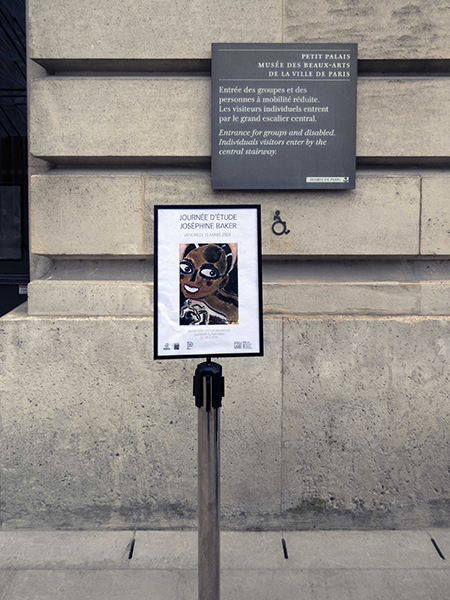 Entrance for conference speakers and attendees
Entrance for conference speakers and attendees
© Entrée to Black Paris
This free colloquium was supported by FRAME - the French American Museum Exchange - which hosted an educational travel trip to Missouri that supported research on Baker as well. The colloquium coincided with the Petit Palais' current exhibition, Le Paris de la Modernité, 1905-1925 (Paris Modern, 1905-1925), in which a section is devoted to Baker.
I was only able to attend the morning sessions of the event, which covered Baker's life in St. Louis and her early years in Paris.
The afternoon sessions focused on Baker's life as viewed by her son, Brian Bouillon Baker; her activities during the Second World War, and her induction into the Pantheon.
Annick Lemoine, Director of the Petit Palais, opened the colloquium and welcomed the speakers and attendees.
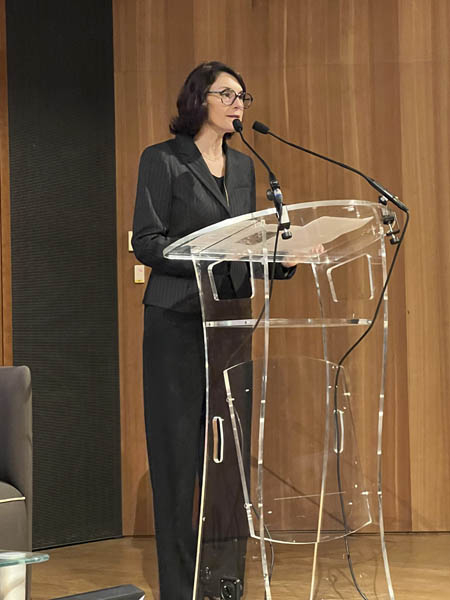 Annick Lemoine
Annick Lemoine
© Entrée to Black Paris
This was followed by a statement by Juliette Singer, curator for the exhibition, who moderated the morning sessions.
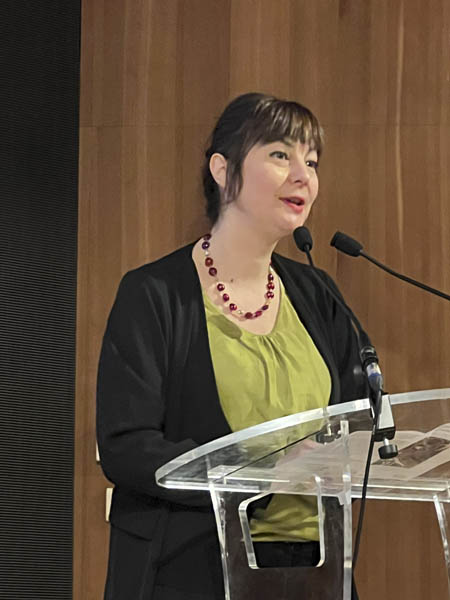
Juliette Singer
© Entrée to Black Paris
The first invited speakers were Professor Denise Ward-Brown, College and Graduate School of Art at the Sam Fox School of Design and Visual Arts at Washington University in St. Louis, and Associate Professor Joanna Dee Das, Performing Arts department at Washington University in St. Louis. These two women tag-teamed to present a fascinating account of the origins of jazz dance and Baker's mother's dance prowess as a precedent for her daughter's success.
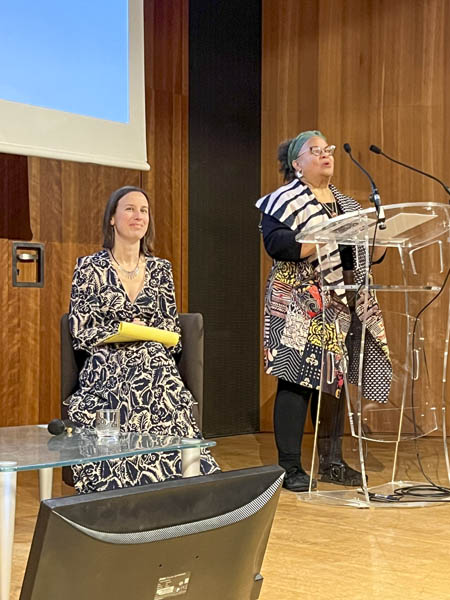
Joanna Dee Das (seated) and Denise Ward-Brown (standing)
© Entrée to Black Paris
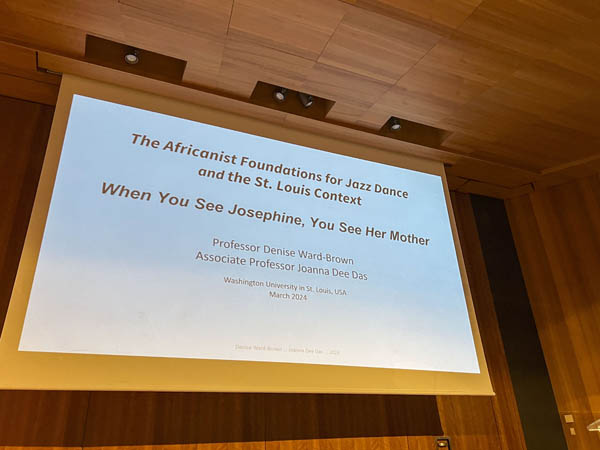 Title slide of Washington University professors' talk
Title slide of Washington University professors' talk
© Entrée to Black Paris
They also talked about their collaborative documentary film project, Josephine's World, through which they are acknowledging and reclaiming through dance the land on which Baker and an entire African-American community in St. Louis lived and worked.
Next on the agenda was Brian Scott-Bagley, Parisian showman, choreographer, tour operator, and Founder of the Musée Joséphine Baker et des Afro-Descendents de Paris. He regaled the audience with stories that illustrate how his personal and professional life is inextricably intertwined with that of Baker and her Rainbow Tribe.
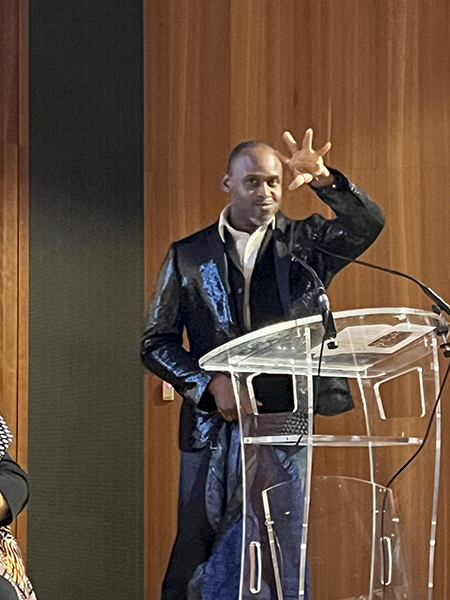 Brian Scott-Bagley
Brian Scott-Bagley
© Entrée to Black Paris
The three speakers then took questions from the audience.
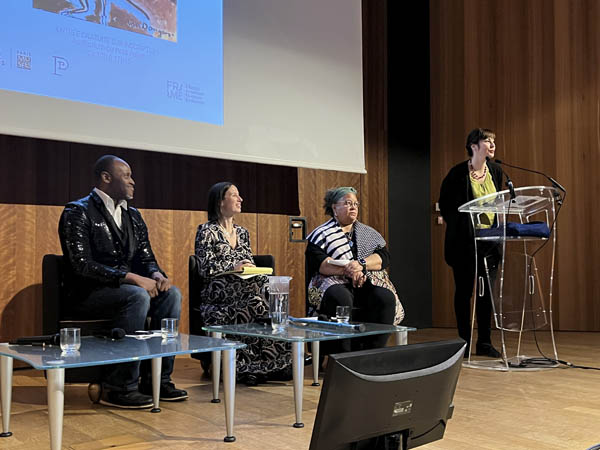 First panel of the day
First panel of the day
© Entrée to Black Paris
The mid-morning break provided an opportunity to visit the museum's gift shop. There, observant browsers found a hand-patinated resin sculpture of Baker by Sébastian Tamari.
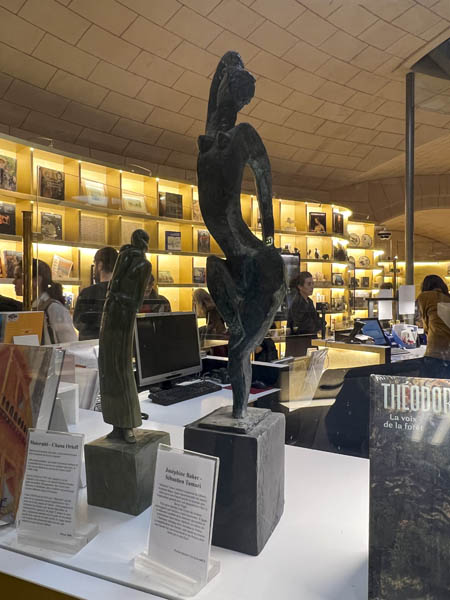 Joséphine Baker by Sébastian Tamari
Joséphine Baker by Sébastian Tamari
© Entrée to Black Paris
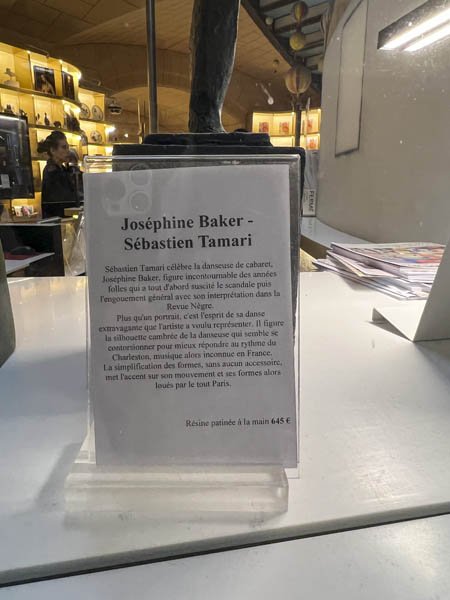
The second half of the morning consisted of a round table discussion about Baker's arrival in Paris in 1925 and the two performances that made her famous around the world - La Danse Sauvage from La Revue Nègre and La Danse des Bananes from La Folie du Jour.
Nathalie Sergent, Director of Publishing and Multimedia at the Théâtre des Champs Elysées, set the stage by presenting the history of the theater and the evolution of the types of entertainment presented there prior to Baker's début in La Revue Nègre.
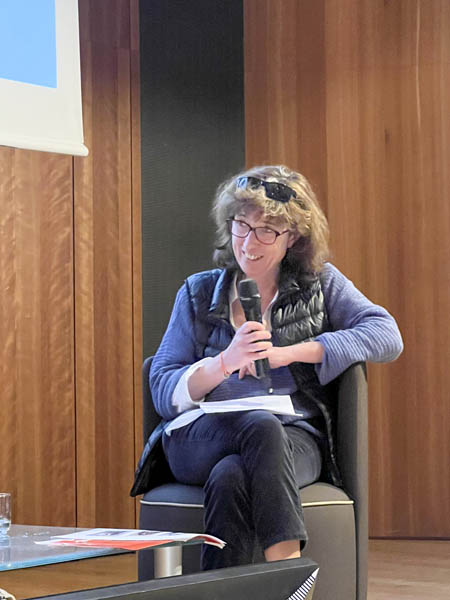 Nathalie Sergent
Nathalie Sergent
© Entrée to Black Paris
She displayed advertisements and playbills of various shows as well as images of the program for La Revue Nègre.
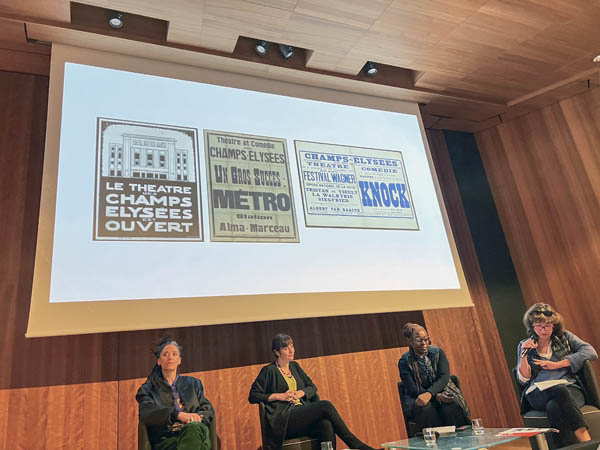 Théâtre des Champs-Elysées ads and playbill
Théâtre des Champs-Elysées ads and playbill
© Entrée to Black Paris
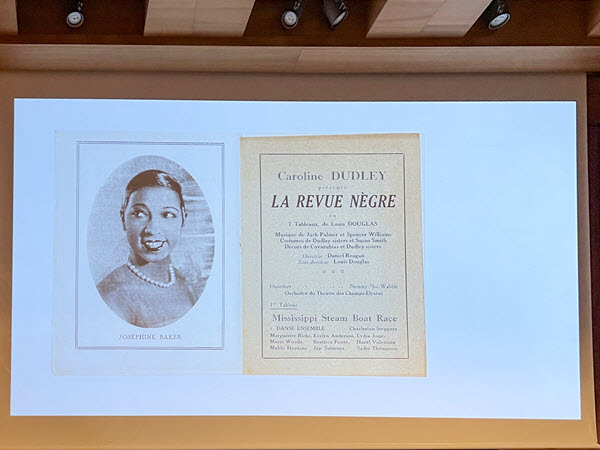 La Revue Nègre program
La Revue Nègre program
© Entrée to Black Paris
Pascale Obolo, independent film-maker, researcher, curator, activist, and Founder & Editor-in-Chief of the contemporary art magazine Afrkadaa, talked about "the thorny question of the banana skirt."
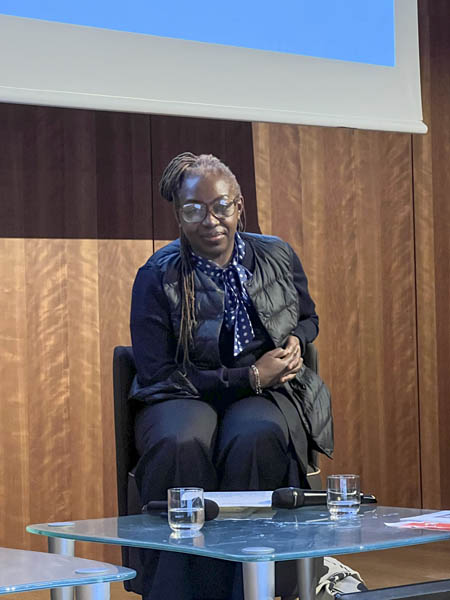
Pascale Obolo
© Entrée to Black Paris
She focused heavily on two contemporary performances that were inspired by Baker's banana dance at the Folies Bergère in 1926 - Beyoncé's performance at the 2006 Fashion Rocks event and Lazaro Cuerno Costa's performance at Jean-Paul Gauthier's 2018 Fashion Freak Show.
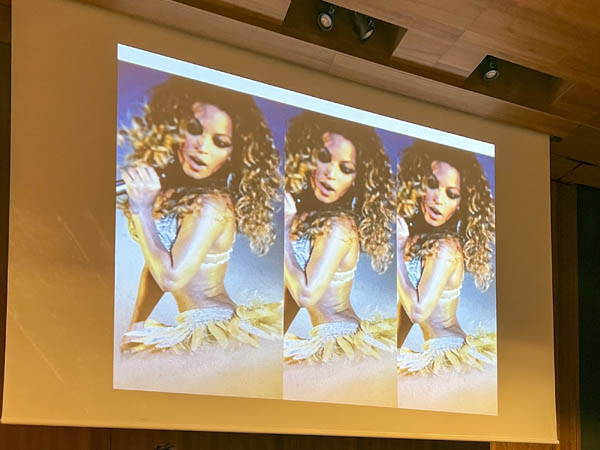 Beyoncé at Fashion Rocks (2006)
Beyoncé at Fashion Rocks (2006)
© Entrée to Black Paris
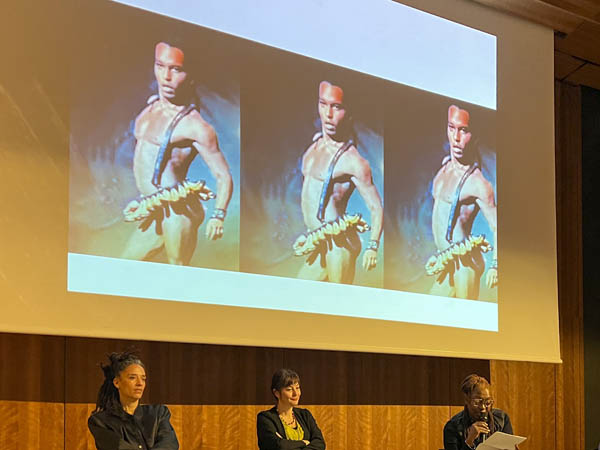 Lazaro Cuerno Costa at Fashion Freak Show (2018)
Lazaro Cuerno Costa at Fashion Freak Show (2018)
© Entrée to Black Paris
The last speaker of the morning was performer, choreographer, and educator Raphaëlle Delaunay. She recounted a story about wearing a banana skirt as a child and not being at all aware of the symbolism and significance behind Baker's first performance in the original costume.
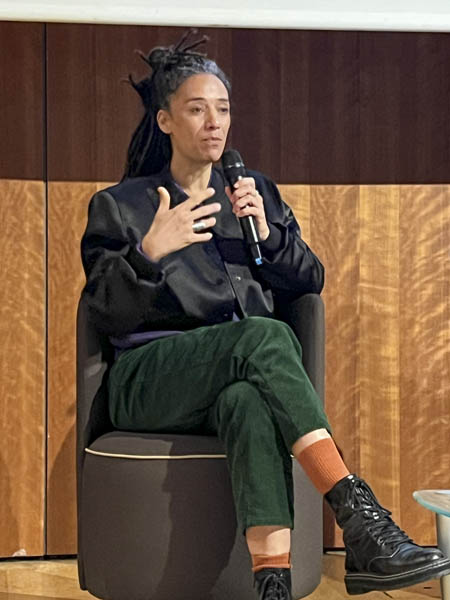 Raphaëlle Delaunay
Raphaëlle Delaunay
© Entrée to Black Paris
She deconstructed the movements that Baker made during the banana dance, describing them geometrically and even rising from her chair to give brief demonstrations of what she was saying.
After Delaunay finished her presentation, moderator Juliette Singer re-opened the floor for questions.
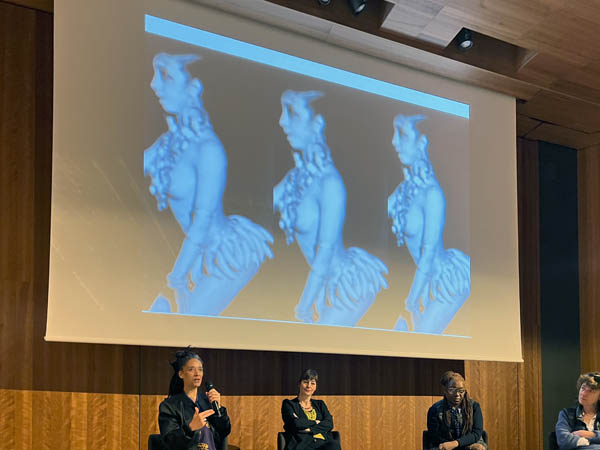 Second panel of the day
Second panel of the day
© Entrée to Black Paris
During a lively discussion about Baker's role in the choreography of the banana dance, Singer announced that Baker's son, Brian Bouillon-Baker, had entered the auditorium. He descended the stairs and took the microphone to add his comments and to ask if anyone who might not return to the colloquium that afternoon wanted to ask him anything before the lunch break.
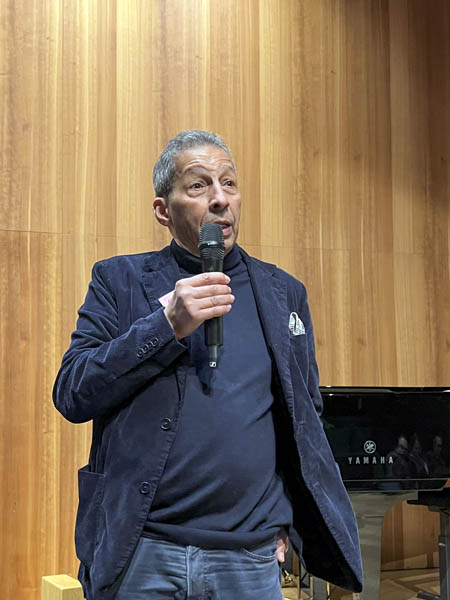 Brian Bouillon-Baker
Brian Bouillon-Baker
© Entrée to Black Paris
The session lasted much longer than anticipated, and it was worth staying for every minute!

 Our Walk: Black History in and around the Luxembourg Garden - Click here to book!
Our Walk: Black History in and around the Luxembourg Garden - Click here to book!